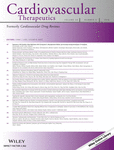Parathyroid Hormone Levels and High-Residual Platelet Reactivity in Patients Receiving Dual Antiplatelet Therapy With Acetylsalicylic Acid and Clopidogrel or Ticagrelor
Summary
Background
High-residual-on-treatment platelet reactivity still represents a challenging issue, potentially vanishing the benefits of dual antiplatelet treatment in patients with coronary artery disease. However, very few is known on the determinants of suboptimal response to antiplatelet agents. Recent interests have emerged on the potential prothrombotic effect of parathyroid hormone (PTH). Therefore, the aim of the present study was to assess the impact of parathyroid hormone (PTH) on platelet reactivity in patients receiving DAPT after an acute coronary syndrome or PCI.
Methods
Patients treated with DAPT (ASA and clopidogrel or ticagrelor) were scheduled for platelet function assessment at 30- to 90-days postdischarge. By whole blood impedance aggregometry, HRPR was considered for ASPI test >862 AU*min (for ASA) and ADP test values ≥417 AU*min (for ADP antagonists).
Results
We included 362 patients on DAPT, 125 (34.5%) receiving clopidogrel, and 237 (65.5%) on ticagrelor. Patients were divided according to PTH quartiles values (<45.8; 45.8–60.3; 60.4–88; ≥88.1 pg/mL). Higher PTH was associated with older age (P = 0.001); renal failure (P < 0.001), higher HDL cholesterol (P = 0.006) and creatinine (P < 0.001) and lower 25-OH cholecalciferol (P < 0.001). Suboptimal response to ASA was infrequent (2.8%), and not influenced by the levels of PTH (P = 0.57). ADP-mediated platelet aggregation was significantly increased in patients with higher PTH (P = 0.03), with an absolute increase in the prevalence of HRPR to ADP antagonists for higher PTH (24.7% vs. 40%, P = 0.007 for 4th vs. 1–3rd quartiles, adjusted OR[95%CI] = 2.04[1.14–3.64], P = 0.02). By the use of the ROC curve, we identified PTH levels above 96.7 pg/mL as the best predictor of HRPR with ADP antagonists (adjusted OR[95%CI] = 2.52[1.31–4.87], P = 0.006). Higher rate of HRPR was confirmed for PTH >96.7 pg/mL among the subgroup of patients on clopidogrel (51.5 vs. 85.7%, P = 0.001; adjusted OR[95%CI] = 12.5[2.6–60.9], P = 0.002), but not among ticagrelor-treated patients (11.3 vs. 16.7%, P = 0.31; adjusted OR[95%CI] = 1.55[0.56–4.6], P = 0.42).
Conclusion
In patients receiving dual antiplatelet therapy for coronary artery disease, higher PTH levels are associated with an increased ADP-mediated platelet reactivity and suboptimal response to clopidogrel, especially for values above 96.7 pg/mL, while not influencing the effectiveness of ASA and ticagrelor.




